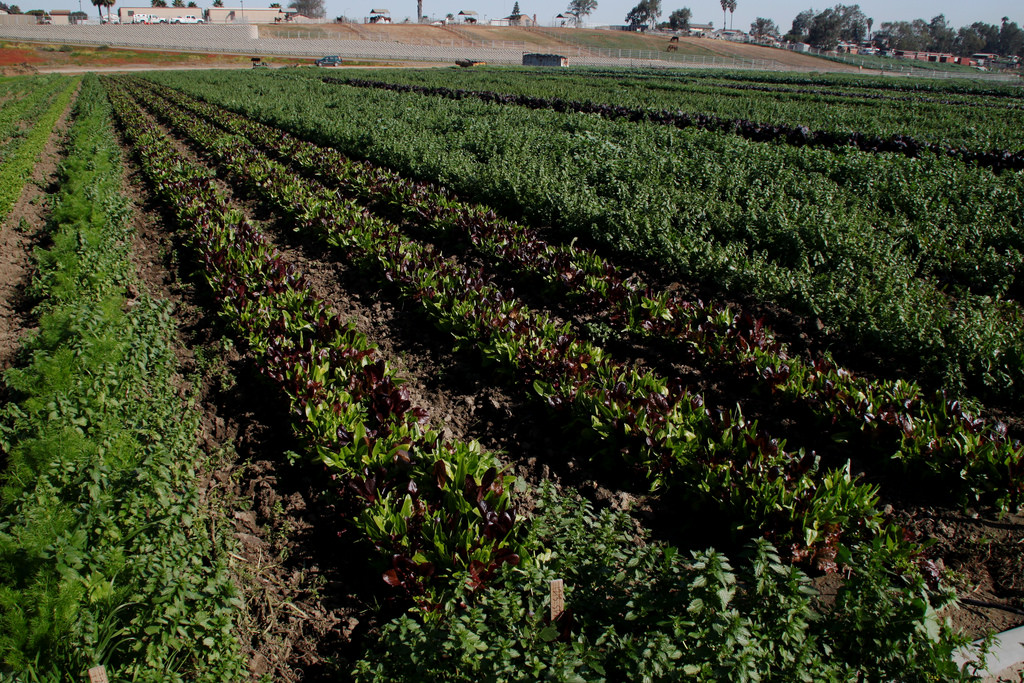|
Taking in news about the coronavirus, social distancing, and hiding in our homes can naturally create an experience of stress, helplessness, and loneliness. I have been trying to stay present with wildly varying emotions, thoughts and self-judgments, moment by moment…while doing my best to redirect myself to the best possible thought/feeling that I can muster in the moment. It has been a constant practice. With that said, I do believe that greater empowerment, peace, and a robust immune system can be close at hand, even amidst the madness. Rather than offer a laundry list of every single thing you can do to support yourself during this time -- which would actually create more stress and negatively impact your immune function -- here are a few essential natural tips to support your immune system and well-being during this pandemic: Eat vitamin C foods. Kiwi, bell peppers of all colors, strawberries, grapefruit, Brussels sprouts, and broccoli -- in addition to the well-known favorite of oranges -- all contain vitamin C. Many of them also contain antioxidants, all of which are essential for a strong immune system. When in doubt go for color, lots of color, in your food choices. Eat zinc foods. Zinc is a powerful immune supportive nutrient, and foods such as oysters, beef, chicken, beans, and cashews contain higher levels of zinc. All of these foods also contain protein, which is an essential building block for your body, and your immune system, to function optimally. Use high-quality nutritional supplements for extra protection. Supplementing with nutrients such as vitamin D, C, zinc, and NAC (N-Acetyl-Cysteine), and using herbs such as elderberry can help us -- and our immune systems -- weather this trying time. Feel free to book time with me for a complimentary consultation if you would like to discuss food, lifestyle, and supplement recommendations to support your immune system. I am also offering 15% off supplement purchases on my online store until April 7, as well as offering help in quickly acquiring high quality supplements when stores or online retailers may be backordered. Get into nature. We may not be able to go to the office or a basketball game, but we can go to nature (albeit 6 feet apart from others!). Nature has been a large part of my solace during this time. It can be as simple as sitting with a tree, flowers, or plants near your home. Or venture out to a spacious park nearby. Research shows that time in nature can significantly reduce stress and improve mood. Stay [virtually] connected to others. Something that really stands out to me in the guidelines for containing the virus is “social distancing.” While staying home, and keeping our distance from others absolutely helps to contain the spread of a virus, I have concerns about its effect on our well-being. Research shows, broadly speaking, that people who are less isolated tend to have better health outcomes. We are social beings and meant to live in community. For this reason, I highly recommend staying in touch with friends, coworkers, and loved ones using video, text messaging, phone, social media. It is a step we can take to support each other, ourselves, and our well-being during this stressful time. Taking on one new practice every few days as you feel comfortable doing so can go a long way toward creating a greater sense of peace, well-being, and health, no matter what the circumstances. I am here for you. Feel free to get in touch if I can be of service to you.
0 Comments
These are trying times to be sure. After 2 months of sheltering in place here in California, I’ve grown tired of staring at the same four walls, and have made my way through several seasons of TV shows. I toggle between appreciating Zoom meetings for their lifeline to others, and feeling exhausted by them. I’ve begun contemplating what type of face mask would be most fashionable and functional. And I know I am not alone with all of this, and so much more.
During this time, getting out into nature has been my salvation. And although some parks and beaches are closed, I know I am not alone in my need to see the open sky, judging from the number of people I pass on my walks, and the news footage of people congregating on beaches. Even after a short time in nature, I feel the stress decrease. I feel my nervous system calm down. I feel my mood lighten. I begin to have a greater sense of hope and possibility for the future. And I know I am not alone in this either. Even before the pandemic, a number of studies showed that being in nature results in reduced stress, reduced depression, reduced blood pressure, and more. Studies also have demonstrated that time in nature can actually reduce levels of cortisol, a primary stress hormone. We also know that when cortisol is elevated, and when stress is present, immunity suffers. So, although these are inherently stressful times, reducing stress in whatever ways we can is essential to support our resiliency if we encounter a virus. So, in case you haven’t already guessed, one of my top health hacks for these times is being with nature. We don’t have to go deep into the woods to receive all the benefits of nature. We can easily find the beauty of nature in most of our neighborhoods. That said, one of the important aspects of our nature time, to receive the most benefit, is mindful connection with it. Pre-pandemic, I gathered groups together in nature and led them through practices of mindfully connecting with the natural world and receiving all the healing benefits it offers. I’ve adapted this program -- Nourish in Nature --for these times, giving folks everywhere the opportunity for a guided nature experience and connection with others at a safe distance. Check out the Nourish in Nature (virtual) Adventure, coming up May 16, 2020. This coming Saturday, people around the country will get out from behind their screens and head out into nature. I’ll guide them through a beautiful nature-connecting experience from an audio recording on their phones. Then we will connect as a group--via a live phone conference call-- from our individual nature locations to share our experiences and connect with others. The Nourish in Nature (virtual) Adventure is going to be a beautiful experience that is needed now more than ever. I hope you will join me. Resources: http://link.springer.com/article/10.1007/s12199-009-0086-9 https://www.ncbi.nlm.nih.gov/pmc/articles/PMC6589172/ https://www.ncbi.nlm.nih.gov/pmc/articles/PMC4465119/#R18 Forest Bathing, or Shinrin-yoku, was developed in Japan in the 80s, and thanks to a growing body of research on its effectiveness it's reaching us in all corners of the world. It involves visiting a natural area, walking in a relaxed way, and paying attention to the present moment.
I think of Forest Bathing kind of like allowing the canopy of the forest to shower you with a sense of calm, peace, and rejuvenation. Plus, research studies have shown it to boost immunity, improve mood, increase energy, lower stress, improve sleep, and more. My clients often ask me for low or no-cost antidotes to fatigue, stress, depression, digestive distress and overall weariness. I continually suggest time in nature as an affordable, easy and enjoyable therapy to improve health. However, spending time in the forest blasting music into our ears, burying our faces in our phones or cycling through our to-do lists in our minds doesn’t cut it. There is an element of mindfulness in Forest Bathing that is important. Engaging all of our senses, quieting our voices and our minds, and really paying attention are important so we can receive all of the healing effects of nature. Experiment with Forest Bathing on your own, or if you live in the Bay Area and want to try some guided Forest Bathing, consider joining me for the Nourish in Nature Experience on October 19. It’s a 2-hour Forest Bathing and connection event that will leave you relaxed and rejuvenated. Check out the Nourish in Nature Experience. Learn more about Forest Bathing. Want to know an easy and inexpensive way to become and stay healthy? Get with some trees. Notice them, appreciate them, or simply be near them.
A recent study found that the higher the density of trees, even in photographs, the greater the reduction in stress. People experienced lowered stress even if the trees were located in an urban area.(1) Studies have also shown that stress can influence the onset of chronic diseases like cancer and heart disease, as well as depression and anxiety.(2) We also know that even if there is not a lot we can do to change our stressors, activating our parasympathetic nervous system (the one that allows us to relax and restore), can mitigate stressful experiences and decrease their impact. Connecting with nature is one way to do that. Spending time in nature is an enjoyable and easy way to support our health and well-being. While, as studies show, more trees = less stress, being mindfully present with even one tree or plant can create a sense of calm and support our health. This is a great option if we live or work in an urban environment. I’ve experienced first-hand the beneficial effect being in nature has for me, including calming my nervous system, enhancing my outlook on life, amplifying creativity, and increasing my sense of inner peace and connection with all of life. I see the powerful effect that connecting with nature has for others too, and it is my joy to be with them in the experience. That’s why I’m excited to host the Nourish in Nature Experience in the San Francisco Bay Area on Oct. 19th. It’s a 2-hour opportunity to experience first-hand the healing power of nature through hiking, meditation, being with beautiful Redwood trees and healthy snacks. I’d love for you to join us. Check out the details here. Resources:
Energy and vitality in midlife and beyond. Think it’s not possible? Think again. Our middle and later years don’t have to be a downward spiral until it’s time to check out. It can be the most vibrant time of our lives, if we work with the changes in body and life, rather than against them.
In this 3-part series, I’ll share secrets to creating health from the inside out, so midlife can be a time of vitality, reinvention and transformation. First up: Hormones. Whether you are pre- or post-menopause (or andropause for the men), if you’re over 40, your hormones are a-changin’. Our bodies seem to change without our doing anything different. We might experience more belly fat; less muscle, sleep disruptions, or weight-creep. We might be crankier or more easily stressed than we were before. We might not feel as energized anymore. And, yet, I’m proposing that midlife and beyond could be the most vibrant period of your life. As I approach 50, and work with hundreds of people over 40, I’ve seen what’s possible for people who take charge of their health, versus people who do nothing and just accept that their reduced quality of life is to be expected as they age. One of my mentors, bestselling Hormone Cure author Dr. Sara Gottfried sums it up well: You can achieve anything you believe, and that includes feeling better than you ever have and taking years off the clock. How, you ask? First, Get clear on your inspiration. Imagine yourself in 10 or 20 years. What would light you up? What do you see yourself doing? Who are you with? What matters to you most? Give yourself permission to dream a little. Perhaps wave a virtual magic wand to expand possibilities if they feel narrow. Now, let’s make sure your body is on your team to help you realize that vision. Here are some tips to support your hormones.
If you’d like to learn practical tools and strategies to ensure midlife and beyond is a time of vitality, joy and possibility, join me on June 14-16 for my Midlife Magic retreat at the stunning 1440 Multiversity. It’s also an opportunity to relax and rejuvenate while enjoying nourishing food amidst majestic Redwoods. Hope to see you there! Did you know...
Three in 10 adults do not spend time outside on a daily basis.(1)
Richard Louv coined the phrase “nature deficit disorder” to describe the ill health effects associated with spending time indoors, with screens, and in urban landscapes, while being disconnected from nature. The research shows that, for example, spending little time in nature impacts children’s self-confidence, behavior and attention span(5,6). Additional studies have found that disconnection from nature affects adults’ moods, stress levels, and cognition as well. Are you suffering from nature deficit disorder? The number of Americans on medications to treat psychological and behavioral challenges is rapidly increasing -- perhaps our “modern lifestyle” is leaving us feeling empty (7)? It turns out our brains respond quite positively to time in -- or even near – nature. And luckily for city dwellers it doesn’t take a trip out to the wilderness to experience the healing power of nature. Here’s the lowdown on how nature makes us feel better, and some inspiration for experiencing more nature-connection in your life. 1. Less feeling blue, more happiness! Researchers have found that the sadness, worry and even major depression are tied to the activity in the subgenual prefrontal cortex area of the brain. And guess what? A 90-minute walk in nature changes activity in that region of the brain, thereby reducing the intensity of these feelings (8). I suggest to my clients that they spend 90 minutes in nature at least once per week (and as much nature-time daily as they can manage.) – Who do you know who can join you in nature this week? 2. Less stress and anxiety. Stress, and the effect it has on our bodies, is at the root of many chronic health conditions that affect quality of life. Spending time in nature is one way to activate your calming parasympathetic nervous system – the antidote to the stressed out “fight or flight” mode in which many of us spend most of our days (9). In addition, research has shown that people who live near nature experience less stress and anxiety. A Dutch team studied the medical records of more than 300,000 people, and then looked at how far away they lived from nature. They found that people who lived 1 km or less from a park or green space experienced less anxiety (10). Although I live in a fairly urban environment, there is a lovely rose garden flanked by Redwood trees within walking distance of my home. Start exploring near your home – chances are, there is a park or greenway relatively close that you may not have noticed before. Your brain will thank you. 3. Better memory and focus. Studies show that walking outdoors improves memory and focus in adults – have you ever stepped outside of work to “clear your head” (8,11)? If so you’ve experienced the effects that time away has on the tasks at hand when you begin working again. Researchers at the University of Michigan found that “memory performance and attention spans improved by 20 percent after people spent an hour interacting with nature” (11). Plus, walking in nature had similar effects to meditating in adults, according to the study. So if sitting meditation doesn’t appeal, walk! For those of you who live in colder climates, the Michigan team found that improvements in memory and focus resulting from walking in a park for an hour don’t diminish when it’s cold out. So bundle up and get out there! Join me in nature on May 22. If you’d like to experience the healing, positive effects of nature first-hand, join me for Nourish in Nature on May 22 in Lafayette, CA. Nourish in Nature is an afternoon mini-retreat with yoga, hiking, meditation and a beautiful, fresh farm-to-table dinner. It’s an opportunity to re-connect with yourself and the natural world. Hope to see you there! References: (1)https://www.nrpa.org/uploadedFiles/nrpaorg/Tools_and_Resources/Park_and_Recreation_Month/Park%20and%20Recreation%20Month%20Omnibus%20Survey%20Fact%20Sheet%20FINAL.pdf (2) http://www.nature.org/newsfeatures/kids-in-nature/kids-in-nature-poll.xml (3) https://www.youtube.com/watch?v=bGYs4KS_djg (4) http://www.nature.com/jes/journal/v11/n3/full/7500165a.html (5) Lougheed, T. (2008, October). Wild Child. Environmental Health Perspectives. 116(10). A436-A439. Retrieved August 13, 2009 from GreenFILE database. (6) Louv, R. (2005). Last Child in the Woods: Saving our Children from Nature-Deficit Disorder. Chapel Hill, NC: Algonquin Books. (7) http://apps.who.int/medicinedocs/documents/s19032en/s19032en.pdf (8) http://www.wimp.com/what-hiking-does-to-the-brain-is-pretty-amazing/] (9) http://link.springer.com/article/10.1007/s12199-009-0086-9 (10) http://www.sparkpeople.com/resource/wellness_articles.asp?id=1680 (11) http://ns.umich.edu/new/releases/6892-going-outsideeven-in-the-coldimproves-memory-attention  Does your monthly cycle sweep in quietly and take you by surprise, or do you KNOW well in advance when your period is coming without even looking at the calendar? If you’re like most women you fall on the latter end of this spectrum. Most also assume that having Premenstrual Syndrome (PMS) symptoms is just the way it is, the plight of being a woman. Symptoms such as mood swings, pain, decreased energy, bloating, breast tenderness, abdominal cramping and more have become so normalized in our culture that we expect it. If your monthly cycle hits you like a ton of bricks, you DON'T just have to suck it up and deal with. You have a lot of power to reduce the discomfort you feel as your cycle approaches. In this two-part blog series, I’ll provide 7 useful tips you can implement right away to reduce PMS symptoms. Before we get to the tips, let’s briefly review what causes us to experience PMS symptoms. Although our bodies’ hormone interplay is complex, one primary reason for PMS symptoms is estrogen dominance. This can mean that our estrogen levels are too high or our estrogen levels are too high in relation to progesterone (this ratio is super important), or both. There are many root causes for elevated estrogen levels -- I’ll address some of them in context of the tips below. If you’re experiencing PMS, consider taking some of these steps to improve your symptoms and get more of your life back. 1. Improve Detoxification – Your liver is responsible for making sure that you “use it and lose it” when it comes to estrogen. When estrogen hormones have served their purpose, they need to be removed from the body. So love up your liver. Eat cruciferous vegetables like broccoli, cauliflower, cabbage, and bok choy, as they support detoxification. You could also try roasted dandelion tea, a lovely liver tonic. Many women benefit from supplementing with DIM (Diindolylmethane) a phytochemical in broccoli that promotes production of protective estrogens and reduce the “bad” estrogens that can lead to breast and ovarian cancer. Since it’s challenging to eat a bushel of broccoli to get the concentration of DIM generally found in one capsule, some women find benefit in supplementation. CLICK HERE to schedule a free supplement consultation to find out if DIM might be right for you. 2. Increase Fiber – Fiber is found in a variety of foods, including fruits, vegetables, beans, legumes, and nuts. Fiber accompanies excess estrogens out of our bodies through our bowel movements. Aim for 35 grams of fiber daily, but increase SLOWLY, by 5 grams every 3 days or so to avoid digestive distress. Check out Nutrition Data to find out the fiber content in whole foods. 3. Reduce Xenoestrogens – Xenoestrogens are chemicals that can mimic estrogen and disrupt your hormone balance. Bisphenol-A (BPA) is a xenoestrogen commonly found in plastics, and is also used to coat the interior of food cans. Avoid using plastic food containers if you can, and never microwave in plastic or put hot food into a plastic container, as the BPA can leach into your food. Phthalates are industrial chemicals, and another xenoestrogen commonly found in flexible plastic as well as soaps and shampoos. Our skin is our largest organ and takes in a ton of toxins daily – choose safe skin and body care products and use the Environmental Working Group’s Skin Deep Database to find out the safety of personal care products you commonly use. Wanting more ways to say goodbye to PMS? I’ll publish an additional 4 tips next week. I’ll also talk about alleviating your PMS symptoms once and for all on May 4th -- SIGN UP to join me in Albany, CA to learn eating and acupressure techniques for hormone balance. Or SCHEDULE a complimentary 30-minute Health-and-Hormone Jump-Start session for a more personalized assessment. Resources: Beautycounter: http://www.beautycounter.com/dawnpreisendorf/ Environmental Working Group: http://www.ewg.org/skindeep/ Gottfried, S. (2015). The Hormone Reset Diet. Harper Collins. Gottfried, S. (2013). The Hormone Cure. New York, NY: Scribner. Mayo Clinic: http://www.mayoclinic.org/diseases-conditions/premenstrual- syndrome/basics/symptoms/con-20020003 Have you heard that eating foods that are in season is valuable, but may not know the exact reasons why? Perhaps you're a person who vaguely notices the fruits and vegetables at Farmer’s Markets and some local supermarkets change over time, but don’t necessarily choose one item over another because it’s in season. Or you might be someone who looks forward to a certain season because your favorite fruit or veggie is available in abundance! Although I have fond childhood memories of picking blackberries in the woods and helping my grandmother with her large garden, before I became a nutritionist, seasonal eating was not something I paid a whole lot of attention to. Now, after learning all the benefits, I am a regular at the local Farmer’s Market, and have become inspired to eat with the flow of nature. I’d like to share a few of my seasonal eating discoveries with you. Eating seasonally is good for your body. You’ll get more nutrients from local, recently picked, seasonal foods. Most foods reach their nutritional peak close to the time they are harvested, and many begin to lose their nutrient value after picking. If you’re shopping at a Farmer’s Market, it’s easy to get local, seasonal foods. But if you’re shopping at a grocery store, check the label to see the state or country of origin. The less distance that fruit or vegetable has had to travel the better. I feel lucky to live in California and have an abundance of choices in all seasons, but you can find yummy, truly local food in most parts of the United States. What’s in season where you live? I’d suggest doing a Web search for “seasonal foods [your state or region]”. Find a website of a local agricultural organization, farmers’ coalition, or farm-share company – most will have charts of local seasonal foods by month. Here in California, I’m excited about all the cruciferous vegetables we have in season now and throughout the year. Cruciferous vegetables support the liver so it can deal with all the toxins that come our way. The liver also processes and clears neurotransmitters and hormones that we no longer need, keeping you feeling good and your hormones stable. Cruciferous vegetables such as brussels sprouts and broccoli rabe are yummy vegetables currently in season in California. We can also enjoy cabbage, kale and cauliflower all year. Eating seasonally is good for your long term health. “Eating a seasonally based diet with lots of variety throughout the year is the cornerstone of preventive medicine,” said Dr. Preston Maring, a physician at Kaiser Permanente.(1) Dr. Maring finds his inspiration from multiple studies touting the benefits of eating an in-season, plant-focused diet, including reduced risks of cancer, better cholesterol numbers, improved vascular health, weight loss and more. Eating seasonally is good for your soul. Eating seasonally allows you to step into the flow of nature, rather than working against it. According to Stanford University’s Dr. Katie Curhan, studies have found that when interacting with nature humans experience reduced stress and anger, increased feelings of calmness, and “a more concrete awareness of the life cycle.” (2) If you’re inspired, you can consider growing your own food, as gardening can be very meditative. Participating in meditative activities can activate our parasympathetic nervous systems, eliciting a greater sense of calm. Interacting with our communities can be soothing to our souls too. You can connect with local farmers at your neighborhood Farmer’s Market, and spend time getting to know your neighbors. Eating seasonally is good for the earth. Local, seasonal produce can be farmed and harvested without too much extra effort and a reduced need for pesticides. Plus, local food doesn’t have to travel as far, positively contributing to our carbon footprint. To learn more about the health benefits of eating seasonally, and the healing properties of specific foods, join me and my colleagues on Thursday, April 7 in Walnut Creek for The Healing Power of Nature. It’s a free, 90-minute workshop that you won’t want to miss! Learn more and RSVP... Resources: (1)http://www.motherearthliving.com/food-and-recipes/sustainable-food/locally-grown-seasonal-food-zmoz12ndzmel.aspx?PageId=2#ArticleContent (2) https://bewell.stanford.edu/features/power-of-nature http://www.clevelandclinicwellness.com/food/SeasonalEating/Pages/introduction.aspx Omnivore’s Dilemma http://www.westonaprice.org/childrens-health/feeding-the-family-when-its-too-hot-to-cook/ http://www.mindbodygreen.com/0-4807/10-Reasons-to-Eat-Whats-In-Season.html http://www.naturalnews.com/035575_seasonal_food_diet_health.html Photo credit: Stacy Spensleyhttps://www.flickr.com/photos/notahipster/4366374300/in/album-72157623010544930/
 I've looked high and low for a nutritionist-approved green smoothie recipe that tastes good and is low-glycemic (so it won't raise insulin levels and promote belly-fat like many smoothies can if you're not careful with the ingredients). I haven't found one I love as much as this basic, healthy green smoothie, so I thought I'd share it with you. If you have a Vitamix or other high-powered blender, you can throw in everything including the peels on the cucumber, lemon, apple etc. (though not the avocado!). If you have a standard blender I'd recommend peeling them. Ingredients: ½ medium apple, cored 1 celery stalk Approx 2 inches of a medium-sized cucumber Approx 1 inch of ginger root (to taste) 1/3 of a lemon (to taste) 1/2 of a medium avocado, peeled 1-3 cups of baby spinach or baby greens (kale, chard, etc.) Approx 1 ½ cup water Protein powder: collagen, pea or hemp protein** A handful of ice if desired Blend ingredients together until smooth. Drink immediately after blending. Leftovers will keep in the refrigerator for about a day, though I'd recommend re-blending before drinking. Optional additions/substitutions: chia seeds, hemp seeds, freshly ground flax seeds (increase liquid if using these seeds) unsweetened almond milk instead of water, 1 TBSP almond butter, ¾ cup frozen peaches, fresh mint instead of ginger. Please post your ideas below! **Get in touch for protein powder recommendations! P.S. f you're committed to reclaiming health and vitality in 2016, consider Real-Food Detox, beginning Feb. 2 in San Ramon. :-) |
Dawn Preisendorf,
|
Location6536 Telegraph Ave. Suite A101
Oakland, CA, 94609 Work with us in Oakland or anywhere via Zoom. |
|















 RSS Feed
RSS Feed